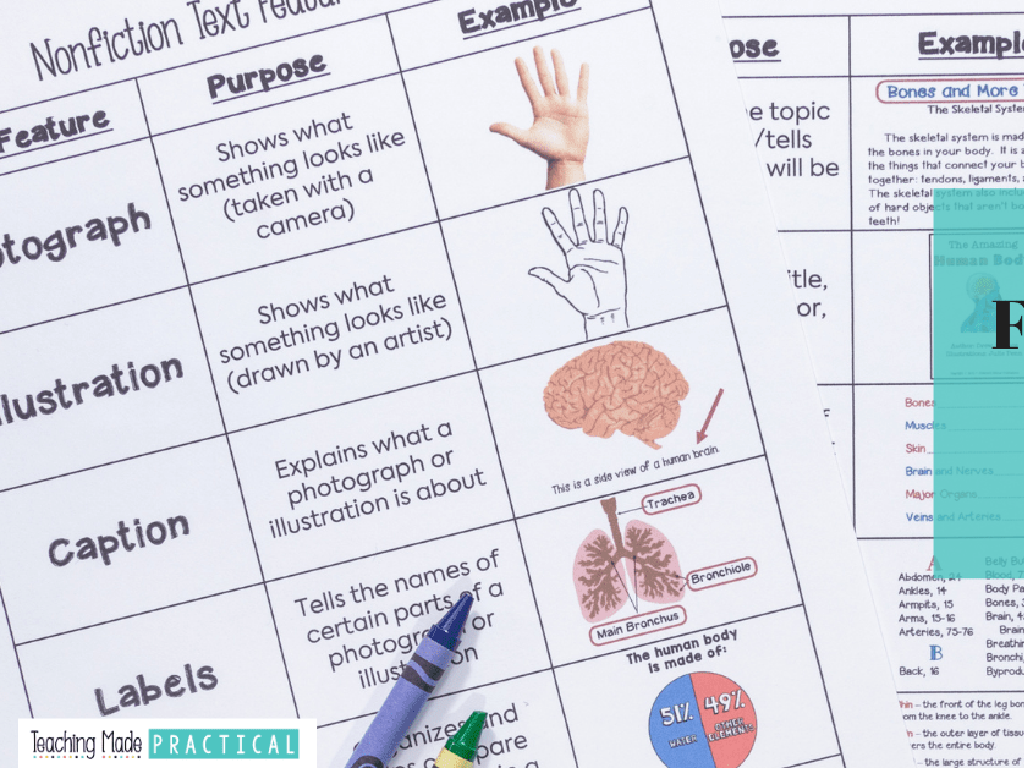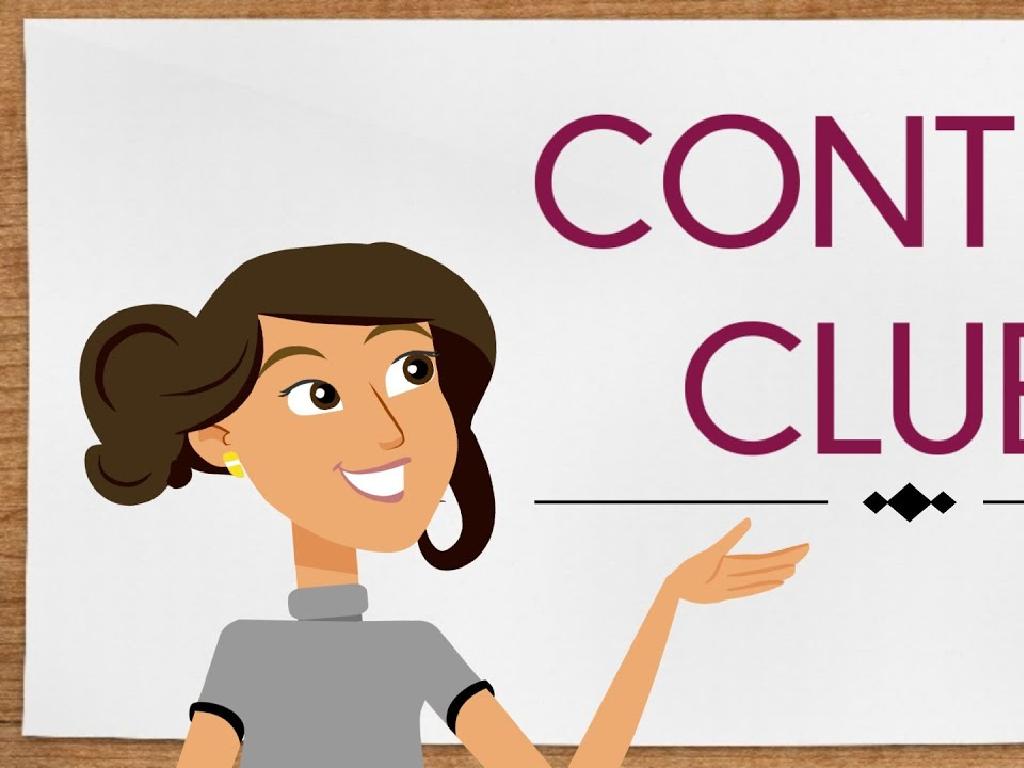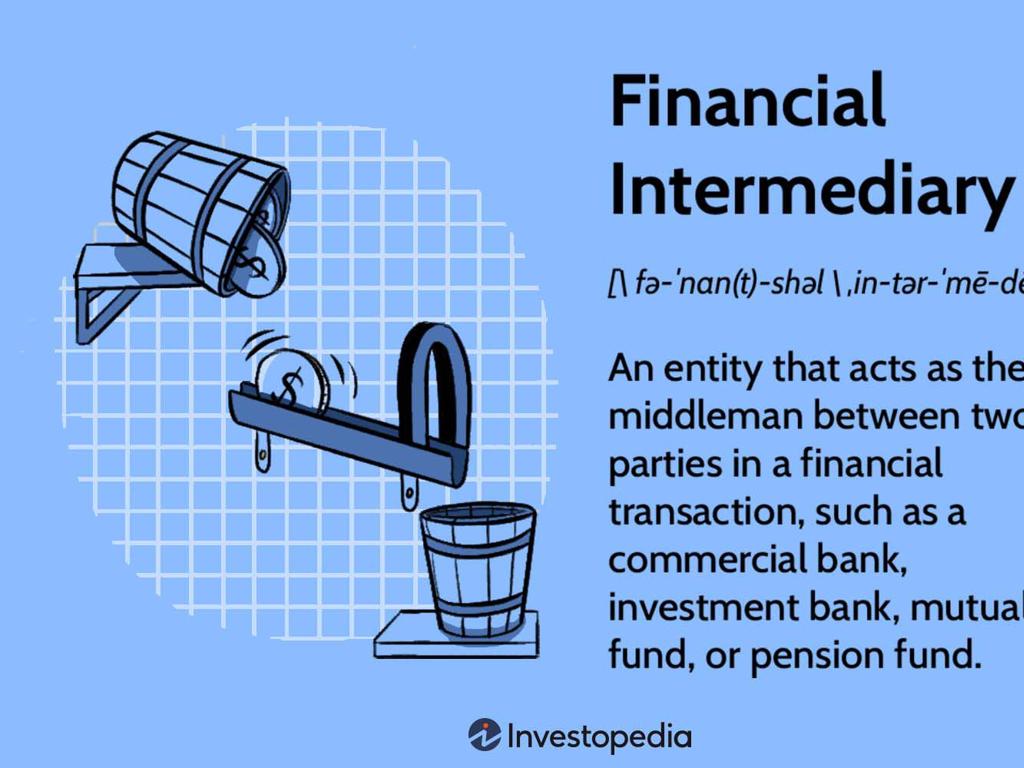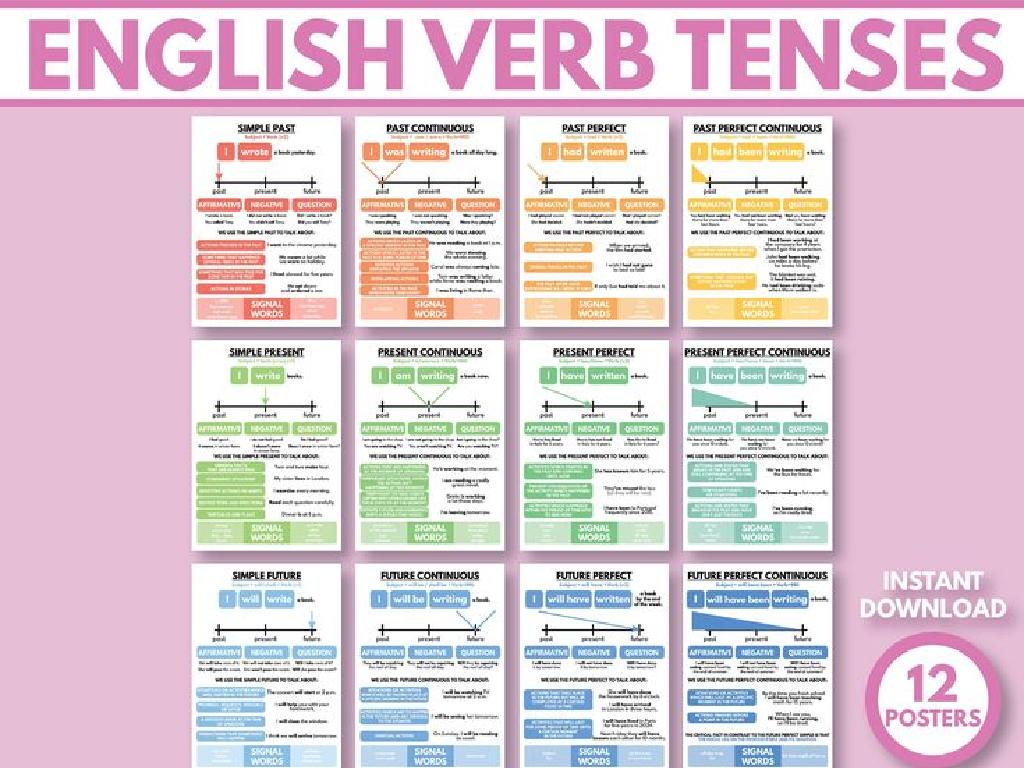Reading And Creating Timelines With Bce And Ce
Subject: Social studies
Grade: Fourth grade
Topic: Social Studies Skills
Please LOG IN to download the presentation. Access is available to registered users only.
View More Content
Timelines: Understanding History
– Explore BCE and CE on timelines
– BCE and CE are used to date events in history
– Timelines show history’s story
– Timelines help us see the order of historical events
– BCE: Before Common Era
– BCE is the time before year 1
– CE: Common Era
– CE starts from year 1 and continues to present
|
This slide introduces students to the concept of timelines and the terms BCE (Before Common Era) and CE (Common Era), which are essential for understanding historical chronology. Explain that BCE is used for the time before year 1, similar to BC (Before Christ), and CE is used from year 1 onwards, akin to AD (Anno Domini). Emphasize that timelines are like a storybook of history, showing the sequence of events and helping us visualize the past. Encourage students to think about timelines as a tool that historians use to organize information and to understand the relationships between different historical events. As an activity, students could create their own simple timelines of their life or of historical events they’ve learned about.
Understanding Timelines
– Timelines show events in order
– Like a story, start to finish
– They represent time as a line
– A line with marks for each event
– Timelines span various periods
– From days to billions of years
– Themes can define timeline focus
– Such as a person’s life or a war
|
This slide introduces the concept of timelines to the students, explaining that a timeline is a visual representation of events laid out in the order they occurred. It’s important to emphasize that timelines help us understand the sequence of events over time and can represent any length of time, from a single day to the entire history of the Earth. Themes can be varied, focusing on specific subjects like the life of a historical figure, the events of a particular war, or the milestones in the development of a technology. Encourage students to think of timelines as stories told in pictures and dates, which can help them remember historical events and the order in which they happened.
Understanding BCE and CE in Timelines
– BCE: Before Common Era
– BCE is used for dates before year 1, like 300 BCE
– CE: Common Era
– CE is for dates from year 1, like 2023 CE
– History without religious bias
– BCE and CE are neutral terms used instead of BC and AD
– Practice reading timelines
– Let’s look at some timelines and identify BCE and CE dates
|
This slide introduces students to the concepts of BCE (Before Common Era) and CE (Common Era) as a way to label years in history. It’s important to explain that these terms provide a way to refer to time without relying on religious contexts, making historical references more inclusive. Emphasize that BCE is used for years before year 1, and CE is used from year 1 onwards. To help students grasp the concept, provide examples of timelines and practice identifying dates labeled with BCE and CE. Encourage students to ask questions and to think about why it’s important to have a common way to refer to years across different cultures and religions.
Reading Timelines: BCE and CE
– How to read timeline dates
– Timelines show events in order, like a story. Look for the dates above or below the line.
– Order of events and time gaps
– Events are placed from oldest to newest, left to right. How many years between these events?
– Identifying BCE to CE switch
– BCE is before CE. BCE counts down to year 1, then CE counts up from year 1.
– Practice with a class timeline
– We’ll create a timeline as a class, adding important historical events and discussing the BCE/CE change.
|
This slide introduces students to the concept of reading and understanding timelines, with a focus on the distinction between BCE (Before Common Era) and CE (Common Era). Start by explaining how to read dates on a timeline and the significance of the order of events. Discuss the concept of time intervals between events to help students grasp the flow of historical time. Clarify the switch from BCE to CE, emphasizing that BCE dates count backward to year 1, and CE dates count forward from year 1. Engage the class in creating a timeline, which will help solidify their understanding of the concepts. This activity will also serve as a visual aid to differentiate between BCE and CE. Provide examples of significant events to place on the timeline and encourage students to participate actively.
Creating Your Own Timeline
– Pick a theme for your timeline
– Could be a historical event or a personal story
– Decide your timeline’s start and end
– When did the events begin and finish?
– Order events chronologically
– What happened first, second, third?
– Understand BCE and CE
– BCE means Before Common Era, CE means Common Era
|
In this activity, students will create their own timelines, which is a great way to visualize the sequence of events in history or in a story. Start by guiding them to choose an interesting theme or topic, such as the life of a famous person, the history of their school, or even the events of their own lives. Next, help them determine the starting and ending points, ensuring they understand the span of time they are working with. Then, assist them in arranging events in the correct order, from earliest to latest. Explain the concepts of BCE (Before Common Era) and CE (Common Era) as a way to place events in a global historical context. This will help them understand how to read and create timelines that include dates from different eras. Encourage creativity in the design and presentation of their timelines.
Understanding Timelines: BCE to CE
– Review a historical timeline
– Discuss event significance
– Why were these events important?
– Learn about BCE and CE
– BCE (Before Common Era), CE (Common Era)
– Observe BCE countdown to CE
– BCE years decrease until CE starts
|
This slide aims to help students understand the concept of timelines and the distinction between BCE and CE. Start by reviewing a historical timeline as a class, pointing out the layout and how time is represented. Engage the students in a discussion about why the events on the timeline are significant and how they have shaped history. Explain the terms BCE (Before Common Era) and CE (Common Era), noting that BCE is used for years before year 1 and counts backward, while CE represents years after year 1 and counts forward. Highlight how the transition from BCE to CE occurs and ensure students understand that the timeline is a continuous count of years. Encourage students to ask questions and provide examples of significant historical events that fall into BCE and CE categories.
Class Activity: Create a Timeline!
– Choose historical/personal events
– Place events on timeline template
– Label events with BCE or CE years
– BCE means ‘Before Common Era’, CE means ‘Common Era’
– Understand BCE/CE timeline placement
– Helps grasp the concept of time before/after Year 1
|
This activity is designed to help students understand the concepts of BCE (Before Common Era) and CE (Common Era) in a practical way. By choosing events from history or their own lives, they can relate personally to the material. Provide a timeline template with a zero point to represent the transition from BCE to CE. Guide students to place their chosen events in chronological order and label them correctly with BCE or CE, depending on whether they occurred before or after the year 1 CE. This exercise will reinforce their understanding of timelines and the distinction between BCE and CE. Possible activities could include creating a timeline of a famous historical figure, significant events in ancient civilizations, or milestones in their own lives. Encourage creativity and ensure that each student understands the concept of ordering events from the past to the present.
Sharing Our Timelines
– Present your timeline to the class
– Explain the choice of events
– Share why each event on your timeline was significant to you
– Discuss the importance of each event
– Why does this event matter in history or to our community?
– Learn from classmates’ timelines
– What new events did you discover from others’ timelines?
|
This slide is for a class activity where students will share the timelines they have created. Each student should be prepared to present their timeline to the class, explaining the reasons behind their choice of events and their significance. Encourage students to engage in a discussion with their classmates to learn about different perspectives and historical events. As a teacher, facilitate the discussion by asking probing questions and highlighting the learning objectives of the activity. Provide a supportive environment where students feel comfortable sharing and discussing their work. Possible activities include peer reviews, group discussions, and a gallery walk where students can view each other’s timelines.
Reflecting on Timelines in History
– Recap of today’s timeline lesson
– BCE and CE in historical context
– BCE (Before Common Era) and CE (Common Era) help us place events in time.
– Significance of timeline skills
– Timelines organize history, making it easier to understand and remember.
|
Today, we’ve learned how timelines serve as a tool to visualize historical events in chronological order. Understanding BCE (Before Common Era) and CE (Common Era) is crucial as it allows us to accurately place events, whether they occurred before or after the year one, which is a reference point in history. Knowing how to create and read timelines is important because it helps us organize information, see the sequence of events, and make connections between different periods in history. Encourage students to reflect on how this skill can help them in their studies and to appreciate the structure it brings to learning history.






